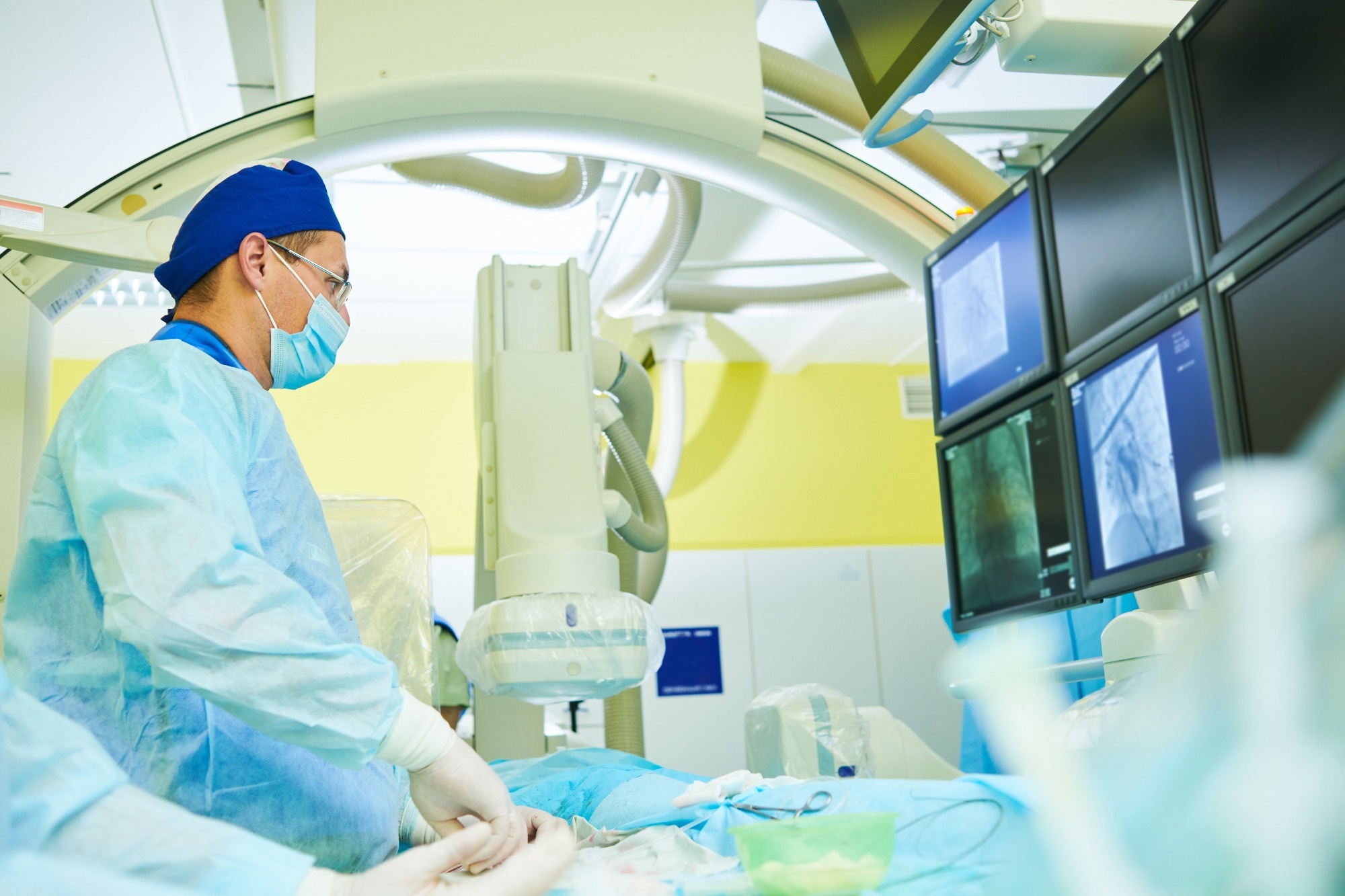Reviewed by Frances BriggsJul 28 2025
Scientists have, for the first time, used photoacoustic microscopy to scan stents through skin, potentially offering a safer and noninvasive way to monitor arterial implants.

Image Credit: Dmitry Kalinovsky/Shutterstock.com
Published in Optics Letters, researchers demonstrated that photoacoustic microscopy can visualize stents beneath the skin. This is a significant step toward less invasive follow-up care for the millions of patients who receive these implants each year. More than two million people in the United States alone receive stents annually to restore blood flow in narrowed or blocked arteries.
Monitoring the condition of these stents is vital, as complications like fractures or misalignment can pose serious health risks. However, current monitoring methods typically involve invasive procedures or exposure to ionizing radiation, prompting researchers to explore new approaches.
As a result of these issues, we were inspired to test the potential of using photoacoustic imaging for monitoring stents through the skin.
Myeongsu Seong, Study Co-Lead Researcher, Xi’an Jiaotong-Liverpool University, China
The team’s study showed that PAM could detect stents wrapped in excised mouse skin under a variety of simulated clinical conditions, such as injury, plaque buildup, and overlapping stent movement. These tests aimed to mimic real-world complications that may arise after stent placement.
While our photoacoustic microscopy results are preliminary, further development could enable frequent, noninvasive monitoring of stent status, without the need for surgical access or X-ray exposure. This would make it easier and safer to monitor the condition of stents in patients.
Sung-Liang Chen, Study Co-Lead Researcher, Shanghai Jiao Tong University
How Sound Sees Stents
Photoacoustic imaging is a label-free approach for detecting sound waves produced when materials absorb light and emit energy. Soundwaves scatter less than light, which means this imaging technique can provide higher-resolution pictures at deeper depths than solely optical approaches.
Although previous studies have used photoacoustic imaging with an endoscope to view stents, these approaches have still involved surgery. This new research investigated whether photoacoustic microscopy could provide noninvasive stent monitoring through the skin.
To test this, the scientists simulated different post-implantation conditions, including stent fractures, compression, and movement. They used butter to mimic the presence of lipid-rich plaques or blood clots, placing it on the stents wrapped in mouse skin. Imaging was conducted using photoacoustic microscopy at multiple wavelengths, including 670 nm and 1210 nm, to enhance contrast and material differentiation.
One of the most interesting results is that we could easily differentiate between the butter we used to mimic a lipid plaque and the stent. Because plaque and stents absorb light differently, using two wavelengths helped us distinguish them.
Sung-Liang Chen, Study Co-Lead Researcher, Shanghai Jiao Tong University
Adapting for Depth
The researchers believe that photoacoustic microscopy could be particularly effective for monitoring stents located just beneath the skin, such as those placed in dialysis access sites. For deeper vessels, such as the carotid artery, a related technique, photoacoustic computed tomography, might be more suitable.
However, before photoacoustic imaging can be used in clinical noninvasive stent monitoring, in vivo animal investigations and preliminary clinical trials still need to be conducted. The researchers also highlighted the need to optimize the method for different areas of the anatomy.
Journal Reference
Liang, S., et al. (2025). Photoacoustic microscopy for visualization of stents in multiple scenarios. Optics Letters. doi.org/10.1364/OL.564778.